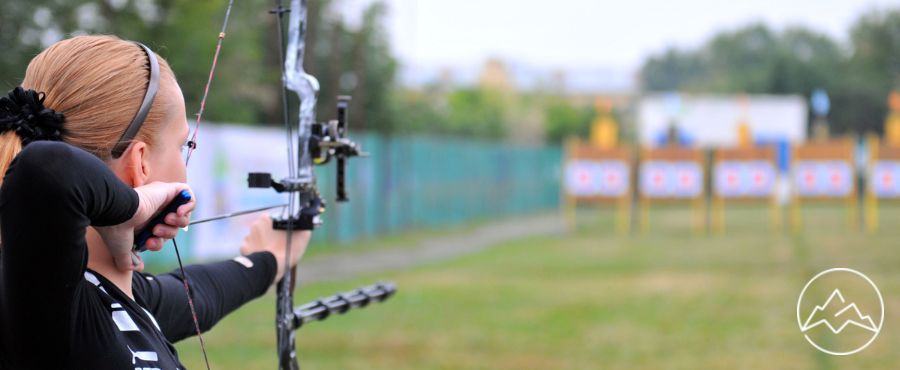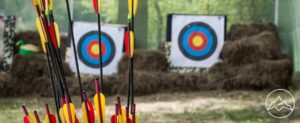Archery, as a discipline, requires precision, focus, and skill. However, even the most experienced archers can make mistakes during their shots. This is where the concept of archery forgiveness comes into play. Archery forgiveness refers to the ability of a bow to compensate for errors made by the archer, such as poor form, inconsistent release, or slight movements during the shot. It is an essential factor in minimizing mistakes and achieving accurate and consistent shots. Several factors contribute to a bow’s forgiveness, including brace height, bow length, type of cam, arrow speed, bow weight, and stabilizers. In this article, we will explore the factors that contribute to forgiveness in bows and discuss the importance of choosing a forgiving bow. By mastering the art of forgiving bows, archers can significantly enhance their shooting experience and boost their confidence in archery.
Key Takeaways
- Forgiving bows compensate for errors made by the archer and are advantageous for beginners, those with poor shooting form, and hunters.
- Factors such as brace height, bow length, cam type, arrow speed, and bow weight contribute to the forgiveness of a bow.
- Longer bows and single-cam bows are generally more forgiving than shorter bows and dual-cam bows.
- Balancing arrow speed and choosing a forgiving bow that suits individual preferences and shooting style can enhance the shooting experience and overall performance.
What is Archery Forgiveness?
Archery forgiveness refers to the extent to which a bow can compensate for errors made by the archer, such as poor form, inconsistent release, and slight movements during the shot, and is influenced by factors such as brace height, bow length, type of cam, arrow speed, bow weight, and the use of stabilizers and counter-balancers. Forgiving bows have several advantages, including the ability to minimize common mistakes in archery shooting. Beginners and those with poor shooting form can benefit from forgiving bows, as they help to correct minor errors and inconsistencies in technique. Additionally, forgiving bows are often preferred by hunters who find themselves in challenging situations where precise shooting is essential. By choosing a forgiving bow, archers can improve their shooting experience and confidence, leading to better overall performance on the range or in the field.
Factors Contributing to Forgiveness
One crucial aspect to consider when evaluating the degree of forgiveness in a bow is the combination of factors that contribute to its overall performance. Factors affecting forgiveness play a significant role in archery, emphasizing the importance of choosing the right bow. Understanding these factors can help archers make informed decisions to enhance their shooting experience. Here are five key factors that influence forgiveness in archery:
- Brace height: A higher brace height contributes to greater forgiveness by allowing the arrow to stay on the string for a longer duration, minimizing the effect of imperfect releases.
- Bow length: Longer bows tend to be more forgiving as they provide a larger margin for error and have a smoother draw cycle.
- Cam type: Single-cam bows are generally more forgiving than dual-cam bows due to their simpler design and reduced tuning requirements.
- Arrow speed: Balancing arrow speed is crucial to avoid excessive errors as too high or too low speeds can impact forgiveness.
- Bow weight: Heavier bows tend to be more stable and forgiving, absorbing more of the shooter’s movements.
Understanding and considering these factors can help archers select a forgiving bow that suits their needs and improve their overall performance in archery.
Choosing a Forgiving Bow
When selecting a forgiving bow, it is essential to consider various factors that contribute to its overall performance. One important factor to consider is the bow weight. Heavier bows tend to be more stable and forgiving, as they are less affected by slight movements during the shot. Another factor to compare is the type of cam system used in the bow. Single-cam bows are generally more forgiving than dual-cam bows. This is because single-cam bows have a simpler design that reduces the chances of synchronization issues and timing errors, leading to a more consistent and forgiving shot. By considering the importance of bow weight and comparing single cam and dual cam bows, archers can make an informed decision when choosing a forgiving bow that suits their needs and preferences.
Frequently Asked Questions
Can archery forgiveness completely eliminate mistakes made by the archer?
Archery forgiveness can enhance accuracy, but it cannot completely eliminate mistakes made by the archer. While forgiving bows can minimize errors and improve consistency, the archer’s skill and technique still play a crucial role. Factors contributing to forgiveness in a bow include brace height, bow length, cam type, arrow speed, weight, and stabilizers. However, even with these factors optimized, the archer’s form and release must be precise for consistent accuracy. Archery forgiveness provides an advantage, but mastery of technique is essential for optimal results.
Are there any disadvantages to using a forgiving bow?
Advantages of using a forgiving bow in archery include its ability to minimize mistakes made by the archer, such as poor form, inconsistent release, and slight movements during the shot. Factors contributing to a bow’s forgiveness include brace height, bow length, type of cam, arrow speed, bow weight, and stabilizers. However, there are limitations to using forgiving bows. They may sacrifice some speed and power compared to less forgiving bows. Additionally, personal preference plays a role in choosing a forgiving bow.
How can stabilizers and counter-balancers improve forgiveness in a bow?
Stabilizers and counter-balancers play a crucial role in improving forgiveness in a bow. By incorporating stabilizer dynamics, these accessories enhance the bow’s stability during the shot, reducing unwanted movements. Additionally, they effectively absorb shock and vibrations, minimizing the negative impact on accuracy. One interesting statistic is that a study conducted by the Archery Trade Association found that bows equipped with stabilizers and counter-balancers resulted in a 15% reduction in overall bow movement, thereby increasing forgiveness and improving shooting performance.
Are there any specific techniques or exercises that can help improve forgiveness while shooting?
Techniques and exercises can be employed to enhance forgiveness and improve accuracy and consistency in archery shooting. One such technique is focusing on proper form and alignment, which involves maintaining a stable stance, a relaxed grip, and a consistent anchor point. Exercises like strength training and practicing release mechanics can also contribute to better forgiveness. Additionally, incorporating mental exercises such as visualization and mindfulness can help archers develop better concentration and control, further improving forgiveness in their shots.
Can a forgiving bow compensate for poor strength or physical fitness in the archer?
Enhancing accuracy: The role of forgiving bows lies in their ability to compensate for poor strength or physical fitness in the archer. A forgiving bow can minimize the impact of these limitations by reducing the effects of poor form, inconsistent release, and slight movements during the shot. Additionally, bow weight plays a crucial role in forgiveness. Heavier bows provide more stability and forgiveness, making them suitable for archers with lower strength or fitness levels.
Conclusion
In conclusion, mastering the art of forgiving bows in archery is a crucial skill that can greatly enhance the shooting experience. By understanding the concept of archery forgiveness and the factors that contribute to it, archers can minimize mistakes and improve their accuracy. Choosing a forgiving bow with the right brace height, length, cam type, arrow speed, weight, and stabilizers is essential for achieving optimal forgiveness. Whether you’re a beginner, have poor shooting form, or find yourself in challenging hunting situations, a forgiving bow can provide the stability and confidence you need. So, aim true and let the forgiving bow be your guide on your archery journey.












